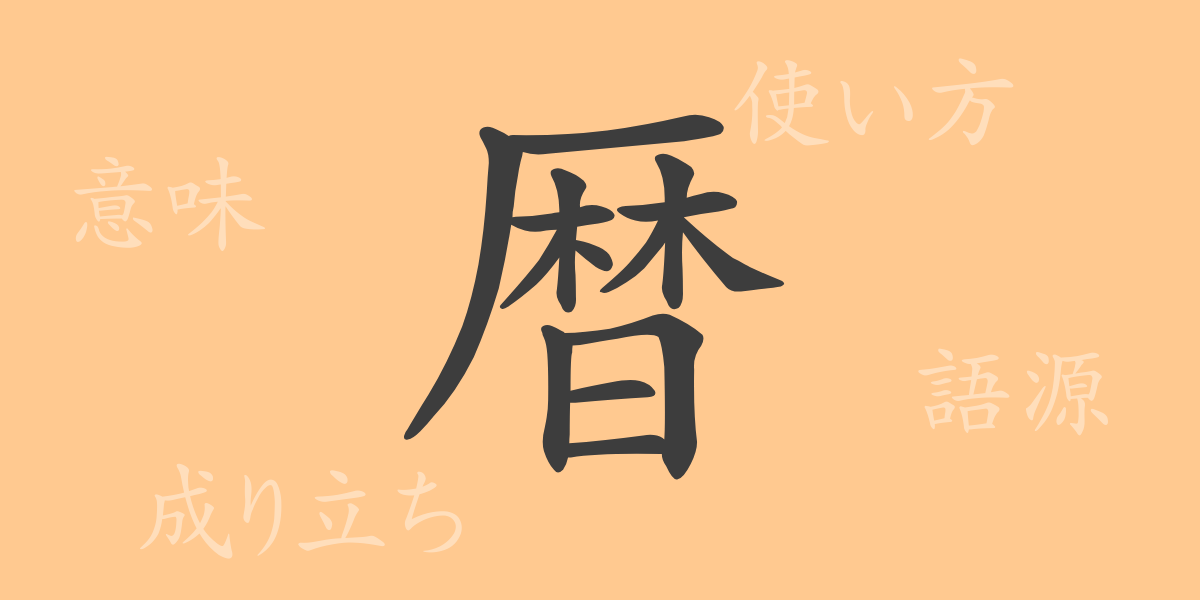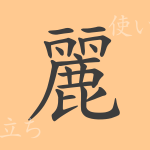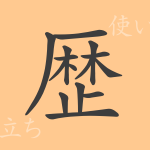The 常用漢字(じょうようかんじ, commonly used kanji) “暦(こよみ, koyomi)” symbolizes the passage of time in Japan. This character, deeply rooted in people’s lives since ancient times, carries a rich history and meaning. In this article, we will delve into the origins, usage, pronunciation, and idiomatic expressions involving “暦(こよみ, koyomi).” By reaffirming the importance of “暦(こよみ, koyomi)” in Japanese culture, let’s take this opportunity to reexamine the profound meanings hidden in our daily lives.
The Origins of 暦(こよみ, koyomi)
The character “暦(こよみ, koyomi)” has its origins in ancient China. It originally referred to the lunisolar calendar, which was created based on astronomical calculations to record the passage of time and determine periods for agriculture and rituals. In Japan, the calendar introduced from China was first adopted during the Asuka period and subsequently evolved into a unique Japanese calendrical system. Despite the transition to the Gregorian calendar in modern times, the meaning of the character “暦(こよみ, koyomi)” remains closely intertwined with the lives of the Japanese people.
The Meaning and Usage of 暦(こよみ, koyomi)
“暦(こよみ, koyomi)” refers to an annual schedule that divides the days of the year into months and marks seasons and festivals. It can also refer to a chronological record of past events or history. Common usages include phrases like “今年の暦(ことしのこよみ, kotoshi no koyomi)を買う (to buy this year’s calendar)” and “暦(こよみ, koyomi)の上では今日は春分(しゅんぶん, shunbun) (today is the vernal equinox according to the calendar).”
Pronunciation, Stroke Count, and Radical of 暦(こよみ, koyomi)
The character “暦(こよみ, koyomi)” contains various pieces of information:
- Pronunciation: On’yomi (音読み, Chinese reading) is “レキ(reki),” Kun’yomi (訓読み, Japanese reading) is “こよみ(koyomi)”
- Stroke Count: 14 strokes in total
- Radical: 日部(にちへん, nichihen) (sun radical)
Idioms, Phrases, and Proverbs Using 暦(こよみ, koyomi)
Idioms, phrases, and proverbs that include “暦(こよみ, koyomi)” often evoke a sense of time or history. For example, the expression “暦(こよみ, koyomi)の上では (according to the calendar)” is used to indicate a discrepancy between actual weather or seasonal feeling and the calendar. The term “年(とし, toshi)の暦(こよみ, koyomi)” is used to refer to one’s age. Additionally, the phrase “暦(こよみ, koyomi)を刻む(きざむ, kizamu)” means to mark the passage of time or to leave a mark in history.
Summary of 暦(こよみ, koyomi)
The 常用漢字(じょうようかんじ, commonly used kanji) “暦(こよみ, koyomi)” is more than just a calendar; it is a character that embodies the weight of culture and history. By tracing its origins and evolution to the present day, we can see the deep relationship between the Japanese people and “暦(こよみ, koyomi).” We hope that by deepening your understanding of “暦(こよみ, koyomi),” you will be able to appreciate Japan’s seasons and traditional events even more richly.

























